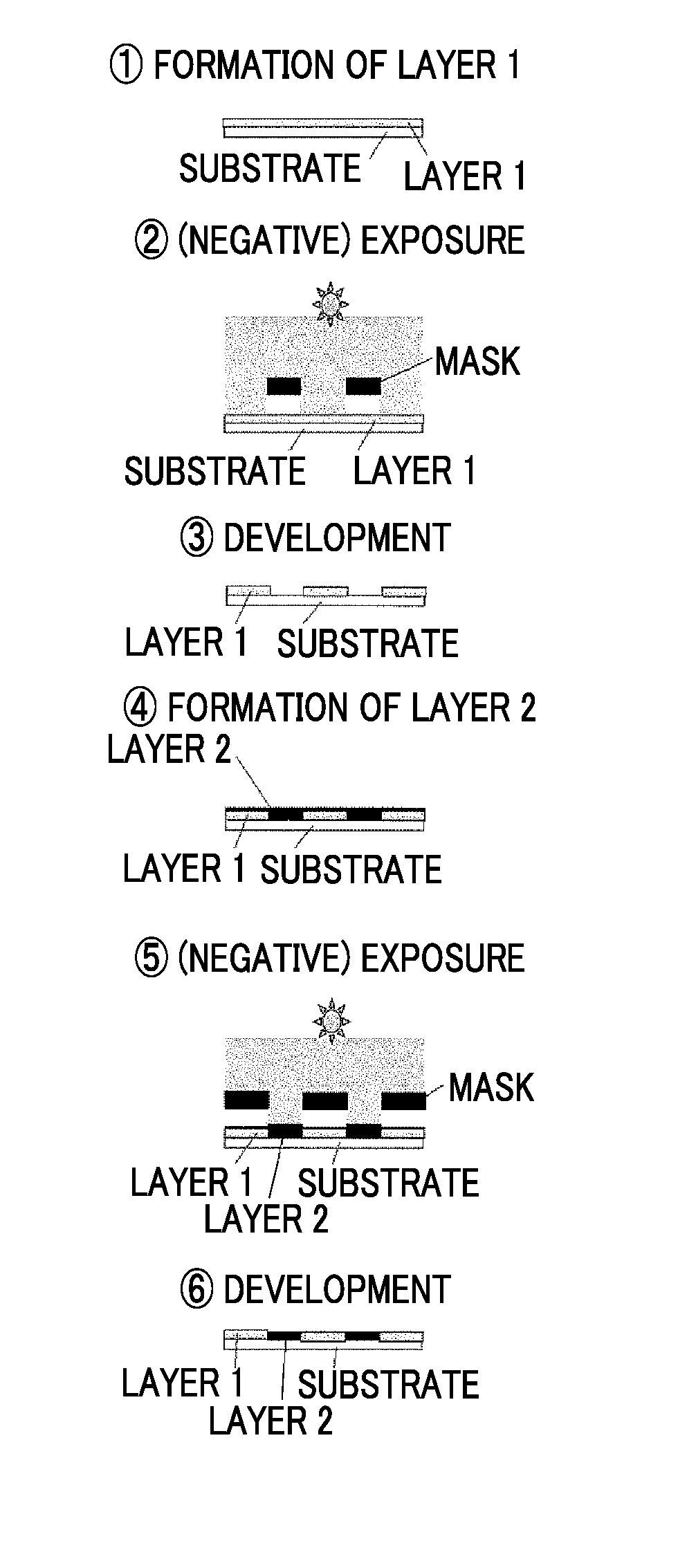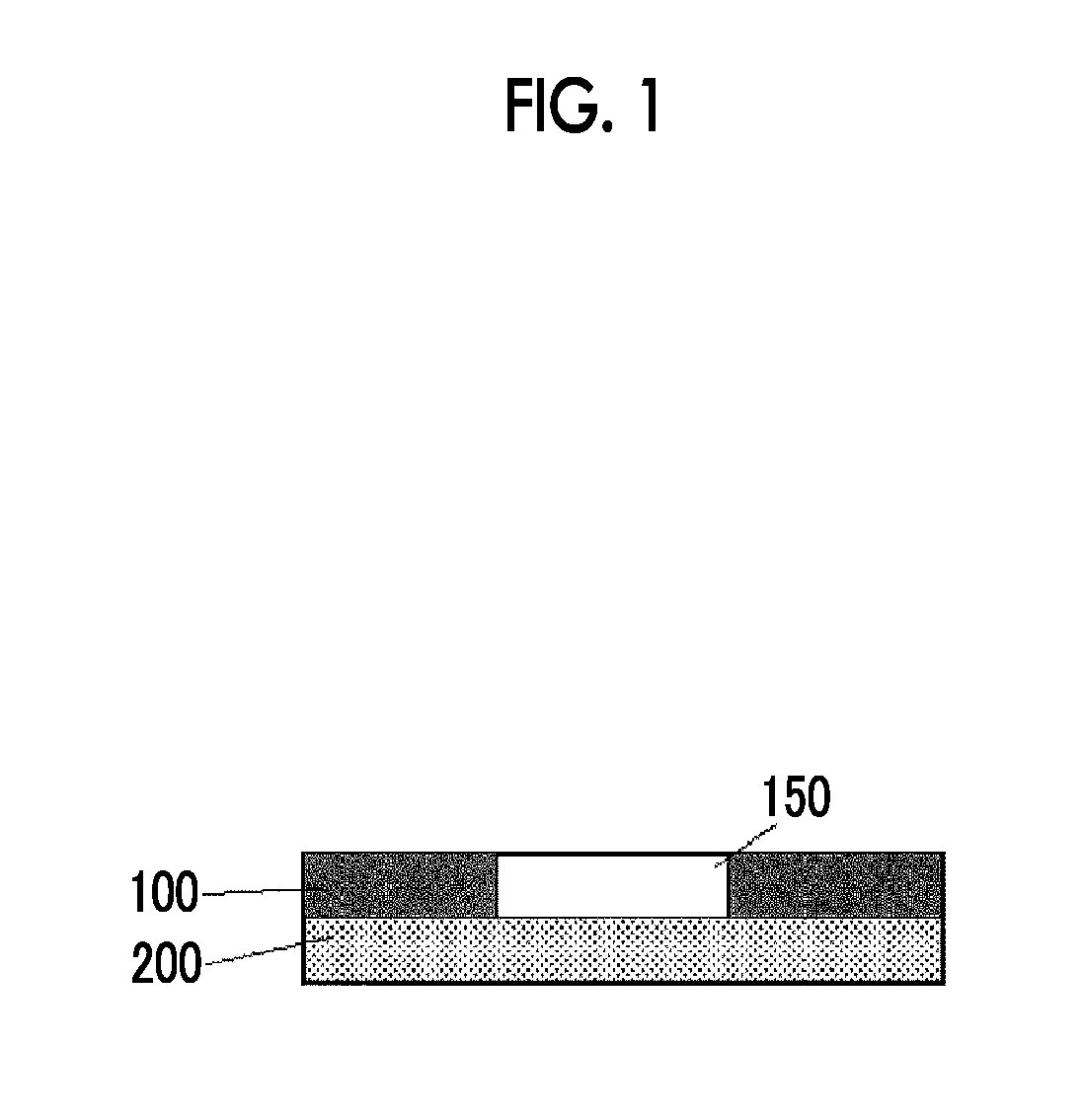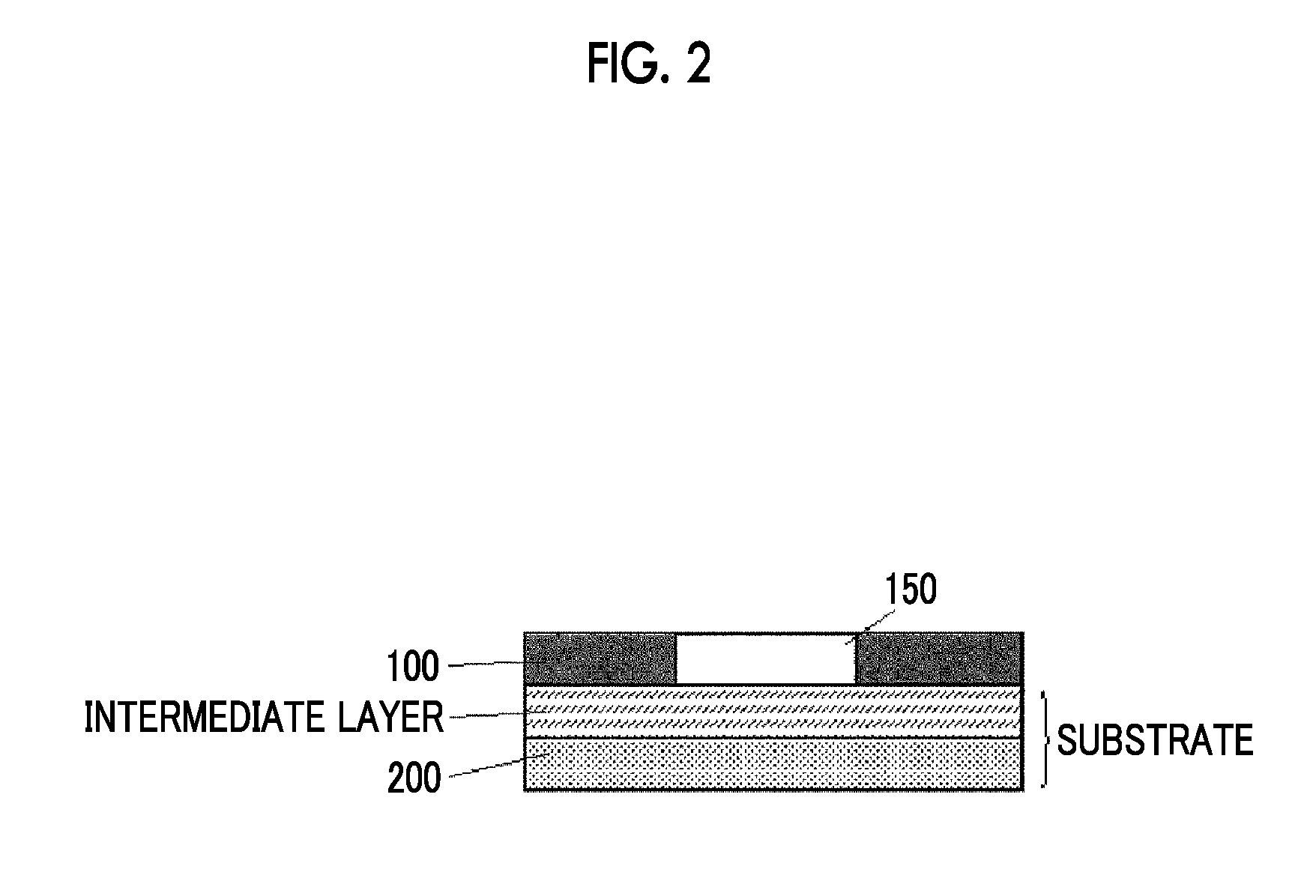Method for manufacturing conductive member, conductive member, and touch panel using same
a technology of conductive components and touch panels, which is applied in the direction of conductive layers on insulating supports, liquid/solution decomposition chemical coatings, instruments, etc., can solve the problems of inapplicability of the method to a conductive film, difficult to put into practical use of energy rays, and failure to achieve the effect of insulating failure from electrochemical migration, favorable conductive properties, and high transparency
- Summary
- Abstract
- Description
- Claims
- Application Information
AI Technical Summary
Benefits of technology
Problems solved by technology
Method used
Image
Examples
preparation example 1
The Preparation of a Silver Nanowire Dispersion Liquid (1)
[0337]The following addition liquids A, B, C, and D were prepared in advance.
[0338][Addition Liquid A]
[0339]120 mg of stearyl trimethyl ammonium chloride, 600 mg of strearyl trimethyl ammonium hydroxide, and 2.0 g of glucose were dissolved in 120.0 g of distilled water, thereby preparing a reaction solution A-1. Furthermore, 70 mg of silver nitrate powder were dissolved in 2.0 g of distilled water, thereby preparing a silver nitrate aqueous solution A-1. The reaction solution A-1 was held at 25° C., and the silver nitrate aqueous solution A-1 was added under fast stirring. The fast stirring was continued over 180 minutes from the addition of the silver nitrate aqueous solution A-1, thereby preparing an addition liquid A.
[0340][Addition Liquid B]
[0341]42.0 g of silver nitrate powder was dissolved in 958 g of distilled water.
[0342][Addition Liquid C]
[0343]75 g of 25% ammonia water was mixed with 925 g of distilled water
[0344][A...
preparation example 2
The Preparation of a Silver Nanowire Dispersion Liquid (2)
[0351]60 g of silver nitrate powder was dissolved in 370 g of propylene glycol, thereby preparing a silver nitrate solution 101. 72.0 g of polyvinyl pyrrolidone (molecular weight of 55,000) was added to 4.45 kg of propylene glycol, and the mixture was heated to 90° C. while ventilating nitrogen gas through a gas-phase section of a container. The liquid was used as a reaction solution 101. While holding the ventilation of the nitrogen gas, 2.50 g of the silver nitrate solution 101 was added to the reaction solution 101 under fast stirring, and heating and stirring was carried out over one minute. Furthermore, the solution was added to a solution obtained by dissolving 11.8 g of tetrabutyl ammonium chloride to 100 g of propylene glycol, thereby preparing a reaction solution 202.
[0352]200 g of the silver nitrate solution 101 was added to a reaction solution 202 being held at 90° C. and stirred at a stirring rate of 500 rpm at an...
preparation example 3
The Preparation of a Silver Nanowire Dispersion Liquid (3)
[0356]A silver nanowire dispersion liquid (3) having a metal content of 0.45% was obtained in the same manner as in Preparation Example 1 except for the fact that the addition liquid A was not used in Preparation Example 1.
[0357]Regarding silver nanowires in the obtained silver nanowire dispersion liquid (3), the average short axis length, the average long axis length, the variation coefficient of the short axis length of the silver nanowires, and the average aspect ratio were measured as described above.
[0358]As a result, the average short axis length was 47.2 nm, the average long axis length was 12.6 μm, and the variation coefficient was 23.1%. The average aspect ratio was 267. Hereinafter, the“silver nanowire dispersion liquid (3)” denoted below will refer to the silver nanowire dispersion liquid obtained using the above-described method.
PUM
| Property | Measurement | Unit |
|---|---|---|
| length | aaaaa | aaaaa |
| length | aaaaa | aaaaa |
| conductive | aaaaa | aaaaa |
Abstract
Description
Claims
Application Information
 Login to View More
Login to View More - R&D
- Intellectual Property
- Life Sciences
- Materials
- Tech Scout
- Unparalleled Data Quality
- Higher Quality Content
- 60% Fewer Hallucinations
Browse by: Latest US Patents, China's latest patents, Technical Efficacy Thesaurus, Application Domain, Technology Topic, Popular Technical Reports.
© 2025 PatSnap. All rights reserved.Legal|Privacy policy|Modern Slavery Act Transparency Statement|Sitemap|About US| Contact US: help@patsnap.com



